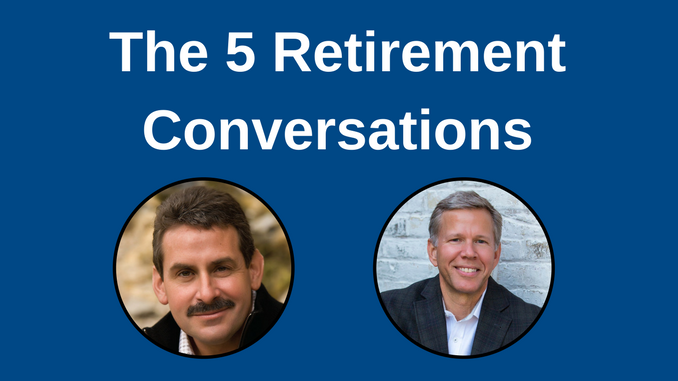Over the past several months, we’ve discussed many of the concepts that can help you add value to your practice through retirement coaching. This month, we’ll wrap up our discussion.
Retirement coaching is a holistic process that involves working with your clients on two levels:
- Quantitative: This process involves focusing on the “financial” segment of “financial life planning” (the means).
- Qualitative: This process involves focusing on the “life” segment of “financial life planning” (the meaning).
The qualitative conversations are what set you apart—but both halves are essential if you want to have a whole.
Start with Asking the Right Questions
When discussing life issues and how to fund them, it is necessary to dig deeper by asking questions that extend the conversation and get to the heart of what matters to your clients. Here are some examples of follow-up questions to ask after your client shares an experience:
- Tell me more about that.
- How did that make you feel?
- What shaped your opinion on that?
These are the questions that help you—and your clients—understand what really matters to them, and why.
In our Retirement Coaching sessions, Steve Sanduski and I discuss the importance of shifting away from questions that can be answered with a simple “yes” or “no,” as well as those that take the focus off making decisions based on money issues alone. Clients need to have a vision of their retirement that includes growth in mind, body, and spirit—a vision that is more than just a number. Both you and your clients need to let go of preconceived notions about retirement and consider the opportunities that come with seeing retirement in an entirely new light. Steve and I refer to this as having an E.P.I.C. retirement, and have developed a video for our retirement coaching participants to use on their own websites.
The Sooner, the Better
While it’s never too early to discuss the future with clients, retirement coaching should take place 4-5 years before retirement—2-3 years at a minimum. The biggest mistake people make is putting off this process until they are about to retire. Clients are often amazed that their initial vision of retirement is very different from what they discover they actually want. It’s important to review how things are going after 4-6 months into retirement (once the “honeymoon” stage is over), and then a year after retirement. You and your clients may be surprised at how their initial vision of retirement may have changed during that period. At that point, you can advise them on any needed changes to their initial plan.
We are at a quantum-leap phase in the industry. There’s a lot of turmoil, and that turmoil is creating change. If you consider yourself a “numbers guy” (or gal)—that’s no longer enough. You can’t do the numbers if you don’t understand the context (the “life” portion). You need to understand and appreciate the backstory of what your clients are going through.
What’s Next?
Here are some things to contemplate when working on your clients’ financial plans:
- Consider your clients’ observations about retirement. What do they think about when they ponder retirement?
- What are the benefits beyond money they may enjoy by continuing to work? How will they replace those non-financial benefits if they stop working?
- For couples’ clients, what are their individual goals? It’s especially important to reconcile goals that a couple may not agree on. The wrong expectations can cause problems down the road, including divorce.
Everything doesn’t have to be worked out ahead of time. Remember, it usually takes 4-6 attempts before equilibrium is achieved. As you already know, no two clients are the same; your planning process should reflect this.
Here are a few other ideas to incorporate into your practice:
Create a RetireMentors Council. Put together an advisory council that includes retirees from various levels and stages of retirement. Tap into their experiences of what was important to them during their own planning. Try to find people who share career paths—for example, match clients who are doctors with RetireMentors who are also medical professionals.
Make sure clients are prepared. Be sure clients understand what is expected of them, and what the desired outcome is. Have them think about the following before starting any coaching:
- Have clients describe what their ideal retirement looks like.
- Have them list the obstacles that make that ideal retirement hard to achieve.
- Ask clients to project out a year—and discuss what would have to happen to consider your work with them successful.
During your discussions with clients, engage them and ask questions, but don’t settle for the first answer. As we discussed above, ask follow-up questions designed to get your clients to provide more context for you and them.
Discuss specific goals. Do they want to travel? If so, where? If they want to learn, suggest they sign up for a course at a local college. Hold clients accountable to act on what they want to do. Review where they are every 1-2 years, and make adjustments as necessary.
In our coaching sessions we discuss how to charge for this added value, and while that discussion goes beyond the scope of this article, you may want to provide the service for free to the first couple of clients so you gain experience and confidence. Whether or not you can charge a flat fee depends on your broker dealer, so it’s best to check in with the powers-that-be before getting started.
Be sure to market your services—after all, if folks don’t know that you can add value this way, they may end up working with someone else. Blogging and teaching is a great way to get the word out. Position yourself as the expert you are. You’re bringing new perspectives that go beyond managing money, potentially setting yourself up to be indispensable. Offer your services to local media as their go-to expert.
Retirement Coaching is a way to differentiate yourself from your competitors by letting clients know you can provide a holistic perspective. In my work with advisors, I’ve heard repeatedly how surprised clients are to know that retirement planning is more than just dollars and cents…you are there to help them achieve balance.
© 2017 Mitch Anthony
Mitch Anthony is the founder and president of Advisor Insights Inc.and the Financial Life Planning Institute, the leading provider of financial life planning tools and programs for the financial services industry.
For almost two decades, Mitch and his team have provided training and development for both individual advisors and major organizations throughout the world. Mitch personally consults with many of the largest and most-recognizable names in the financial services industry on both financial life planning and relationship development.
Mitch is a consistently top-rated presenter who has spoken to groups ranging from 10 to more than 10,000. He has been named one of the financial services industry’s top “Movers & Shakers” for his pioneering work. Through the Institute, he has partnered with Texas Tech University, the University of Georgia, and Utah Valley University to develop financial life planning programs for their undergraduate programs.
Mitch is a sought-after expert for the media, and a regular columnist for Financial Advisor magazine. His columns have appeared on CBS MarketWatch and in the Journal of Financial Planning. His original comic strip “Stanley Brambles, CFG (Certified Financial Guru)” has appeared monthly in the print edition of Research magazine. Mitch is also host of the daily radio feature, The Daily Dose, heard on over 100 radio stations nationwide.
Mitch is also the author of many groundbreaking books for advisors and consumers, including perennial bestseller StorySelling for Financial Advisors, cited by “Financial Advisor” magazine as the number one “must-read” book for financial professionals. Mitch’s other books include The New Retirementality (now in its 4th edition), From the Boiler Room to the Living Room, Your Clients for Life, Your Client’s Story, and The Financial Lit-Kit: The Cash in the Hat, The Bean is Not Green, and Where Did the Money Go?. For information on these books and more resources, click here. Contact Mitch at mitch@mitchanthony.com.




